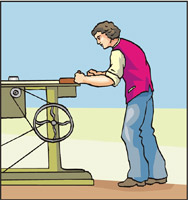
Worksheets and No Prep Teaching Resources
Reading Comprehension Worksheets
A New Nation
(1776-1830)

A New Nation
(1776-1830)
 Worksheets and No Prep Teaching Resources Reading Comprehension Worksheets A New Nation (1776-1830) |
 A New Nation (1776-1830) |
| edHelper's suggested reading level: | high interest, readability grades 4 to 5 | |
| Flesch-Kincaid grade level: | 4.75 |
|
Industrial Revolution
By Cathy Pearl |

|
 1 In the early days of the United States, most of the people were farmers. Most of the things that people used, such as clothes and tools, were made by hand. It took a long time to make the items that people needed. In the 1800s, this slowly began to change. This change was called the Industrial Revolution.
1 In the early days of the United States, most of the people were farmers. Most of the things that people used, such as clothes and tools, were made by hand. It took a long time to make the items that people needed. In the 1800s, this slowly began to change. This change was called the Industrial Revolution. |
Create Weekly Reading Books
Prepare for an entire week at once! |
| Leave your feedback on Industrial Revolution (use this link if you found an error in the story) |
 |
A New Nation (1776-1830) |
 |
Special Education United States History Materials for Teachers
|
 |
United States
|
|
|
 | Fifty States Theme Unit |
 |
Document Based Activities |